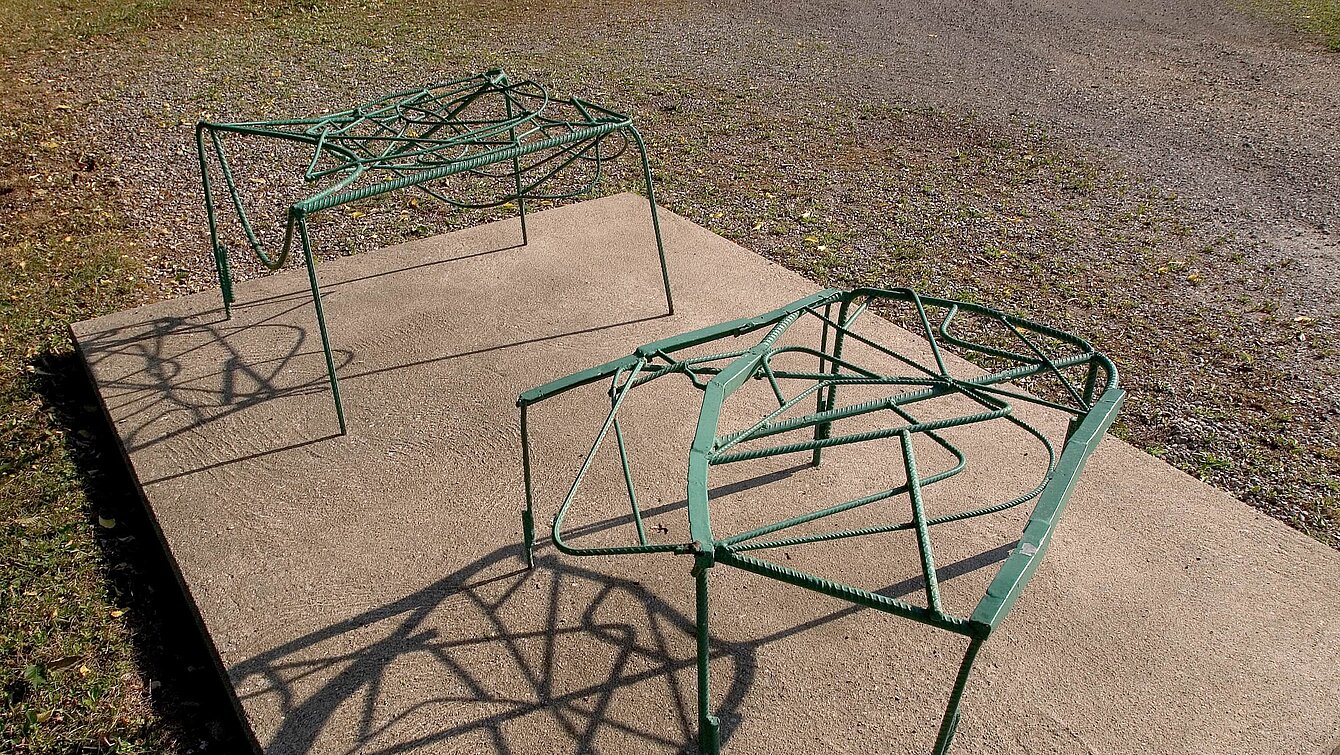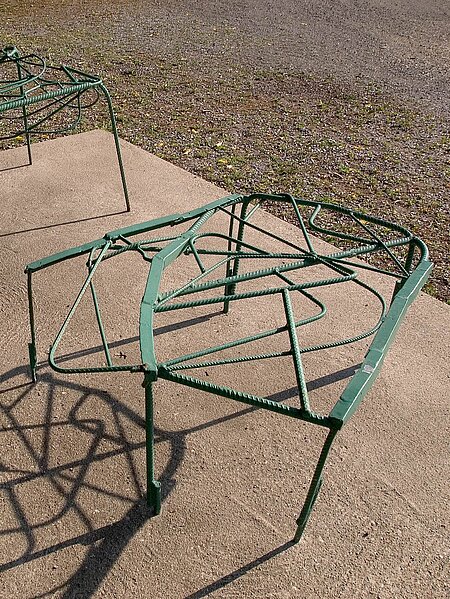An ostensibly haphazard construction of two stools, this sculpture might at first appear provisional and utilitarian. The concrete base on which it stands, however, highlights its status as an ‘untouchable’ work of art. The fundamental human need to communicate with one’s environment and with other people is a primary component of these sculptural stools: the work explores the relationship between artwork and everyday object, as well as between the self and the stranger.
Who is Who
Franz West / Otto Zitko, 1992


Image Credits
Author
Elisabeth Fiedler
Location on map
Position 23
Owner
Artothek des Bundes
Artist biography
Franz West
Show all
About the sculpture
In West’s work, sculpture as an extension of the human body means that furniture is taken back to sculpture and Man’s basic needs such as sleep, rest, contemplation or communication are not left to an object of use or to design, but are woven into art as essential states in life.
Thus for all his sculptural work, Man is the gauge; West’s pieces of furniture link up Man with his subconscious mind, Man with the ground he is bound to, as well as connecting people.
In the seemingly randomly bound up form of two stools, the sculpture appears provisional and interventionist on the one hand, whilst on the other highlighting its meaning as an untouchable sculpture, being placed on a concrete pedestal by West. Being deprived of their ephemeral meaning, the stools become a statement, which can be both read as permeable structure and as a sculpture, and as an invitation to interaction.
West creates an allurement through a combination of attraction and rejection. The meaning of absence, possibilities and temporal limitations is as important as the human transitory possibility on an enduring material.
West offers both stools, for conversation or a psychological session, thus enticing the subconscious into inter-subjectivity, and inviting a short-lived understanding of “Who is who”. The dialectic element between a work of art and an object of everyday use runs parallel to the one between movement and rigour, between self and alien.
Communicating whilst sitting down on a hand-made piece of art lets us feel the mutual entailment of hand and word, at the same time making reference to the fact that this piece of art strives for practical use, as well as to the question of meaningfulness and the possibility of communication and understanding.



















